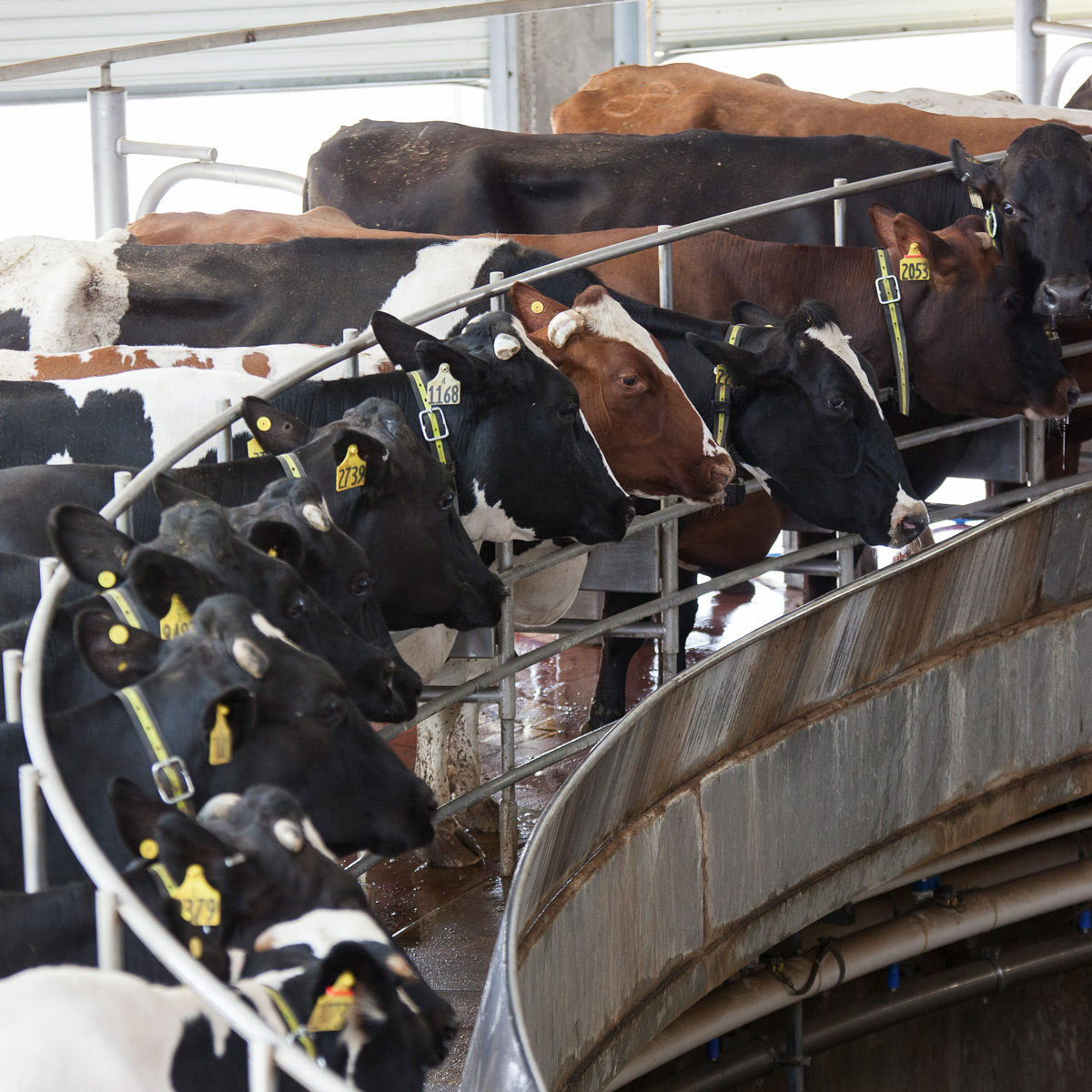Have you ever wondered what a milking parlor is? “Parlor” is a pretty fancy word. Historically, it might have referred to a room used for the reception of guests. A milking parlor on a dairy farm may not be fancy in the traditional sense, but it is important. It could be considered the heart and soul of a dairy farm, after the cows and the farmers, of course. A milking parlor is a specialized area on the dairy farm where cows are milked two or three times daily. Equipment delivers the milk directly from the cows to a refrigerated holding tank.
You might picture in your mind a dairy farmer sitting on a three-legged stool, milking “Bessie” by hand. But, just as technology has changed your world, it has also transformed dairy farming. With technology comes efficiency, and this is as true in agriculture as it is any other sector. Gone are the days of milking one cow at a time. Today, more efficient machines – and sometimes robots – provide efficiency to dairy farms across the country.
Dairy farmers use different milking equipment depending on factors including how many cows they milk, the cost of the machinery and their personal preference.
Milking parlors, like cows, come in all shapes and sizes. Farmers put a lot of thought and effort into the design of this space. It is not so much about feng shui as it is about functionality. Milking parlors are designed for optimal cow and farm worker comfort.
Here are five main designs of milking parlors used by dairy farmers.
1. Parallel. As the name suggests, cows stand parallel to each other in this design. Cows enter a parallel parlor in single file and stand side by side with their tails facing the milker. The milking unit is attached between the rear legs of the cow. In parallel parlors, milking begins when all cows are in their stalls, and they are all released from the parlor at the same time.
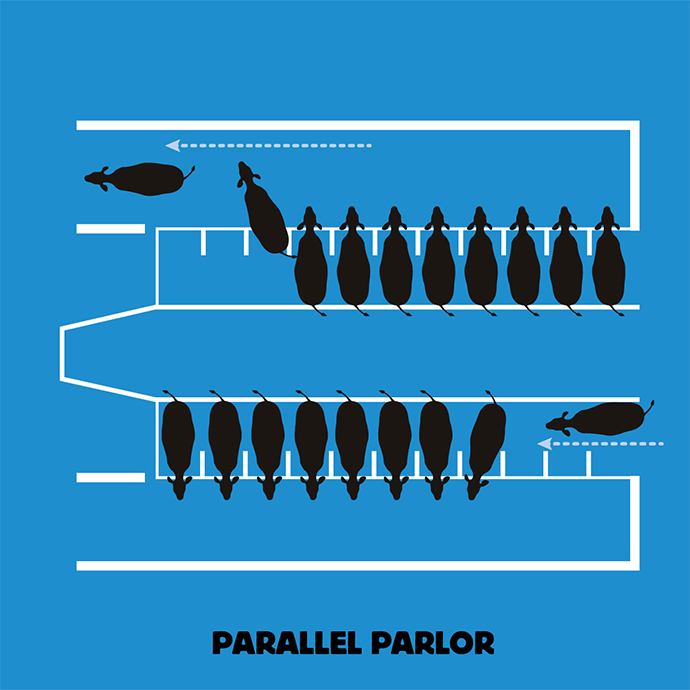
2. Tandem. Tandem parlor designs are not all that different from tandem bikes, in that the cows stand nose-to-tail inside individual stalls. The milking unit is attached from the side. Cows can be released one at a time, so if one cow is moving a little slowly, all of her friends don’t have to wait for her to finish.
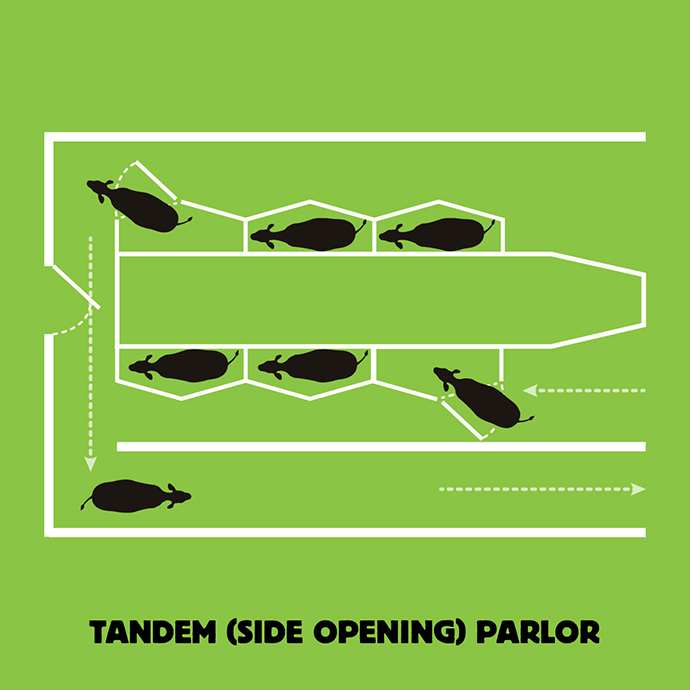
3. Herringbone. Herringbone parlors are the most common design used on dairy farms with smaller herds. The cows stand at a 45-degree angle. This design offers the milker a different access point to the udder than the parallel or tandem, either from the back or in front of one hind leg.
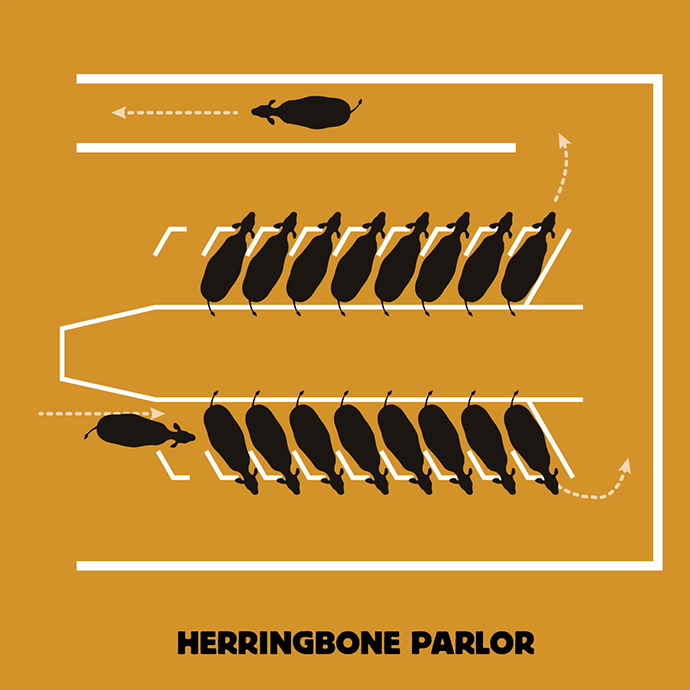
4. Rotary. Rotary parlors are like carousel rides for dairy cows. The milking stalls are arranged in a large circle on a platform that rotates slowly. Cows walk in, and depending on the size of the platform, finish milking by the time they have completed a lap or two. Rather than the farmer having to walk around the parlor to attach the milking equipment to each udder, they stand in one place while the cows rotate toward them.
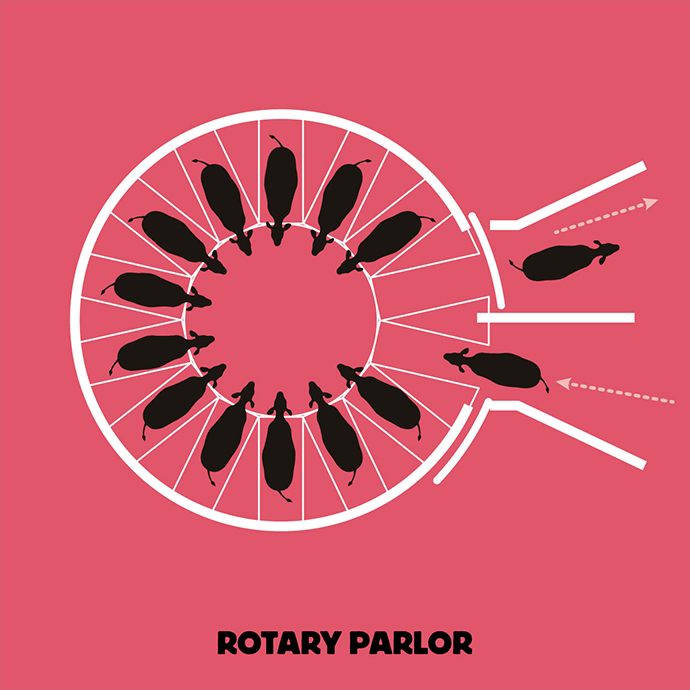
5. Robotic. Newer to the milking parlor scene is the robotic milker. This on-farm technology allows a cow to be milked when she chooses, in a self-service fashion. Each cow has a radio frequency identification (RFID). A cow enters a robotic milking unit when she wishes to be milked and is identified by her tag. The robot is triggered to prepare for the milking process. This means dropping her specially formulated ration into the feed bin, and automatically cleaning her udder. Then a laser beam or camera detects the exact position of the teat and the milking apparatus attaches. The milking stops once the robot senses the flow of milk has slowed. A gate then opens and the cow is free to return to the rest of her day.
What does the rest of a cow’s day look like? No matter which parlor a dairy farm uses, milking takes about 10 minutes per shift. Sometimes people think cows are milked 24 hours a day, 7 days a week. While a dairy operates 24/7, cows spend most of their day as they choose, such as sleeping, eating or drinking water.
On every parlor design, the cow’s udder is always washed clean before the milking machine is attached. Human hands never touch that wholesome, nutrient-rich milk, which is tested multiple times and is safely pasteurized and bottled at a processor. The process from farm to table takes only two days.
While a milking parlor is not the type of parlor we normally think of, cows do get a snack each time they enter. That is hospitality most people can appreciate.
To see a dairy farm milking parlor, take a virtual farm tour at DairyTour360.com »

